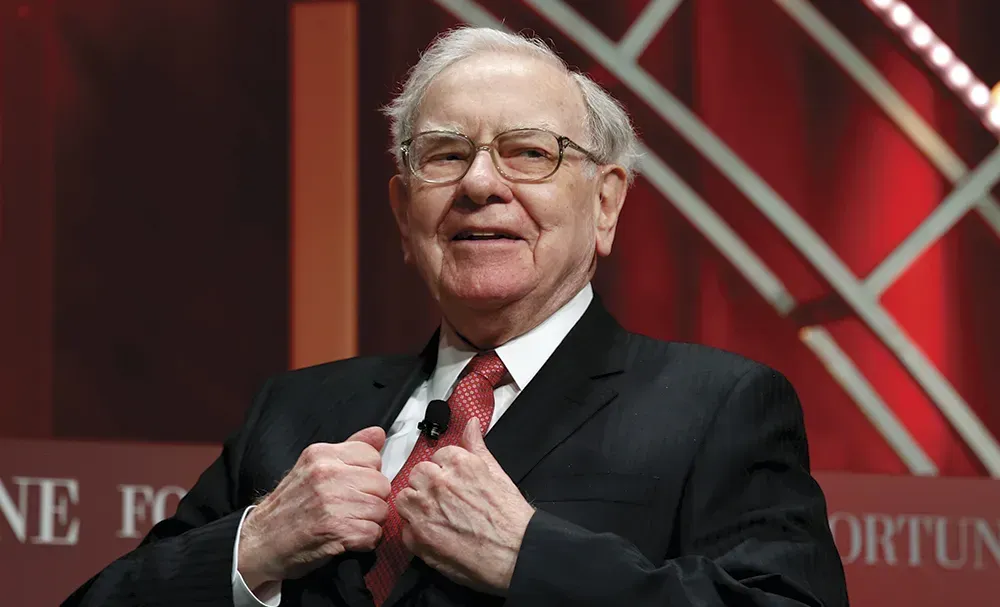Why Berkshire Hathaway’s Cash Position & The Buffett Indicator Don’t Necessarily Signal a Bear Market
Investors often look for signals to determine whether the stock market is overvalued or due for a downturn.

Two frequently cited indicators of a potential bear market are Berkshire Hathaway’s large cash position and the Buffett Indicator. However, a closer analysis reveals that neither of these signals necessarily implies bearish conditions. Instead, both reflect broader economic realities and strategic investment decisions that go beyond simple market predictions.
1. Berkshire Hathaway’s Cash Position: More About Discipline Than Bearishness
Warren Buffett’s decision to hold a large amount of cash at Berkshire Hathaway is often interpreted as a sign that he expects a market decline. However, this assumption overlooks several key factors:
Insurance Float & Liquidity Needs
A significant portion of Berkshire’s cash comes from its insurance operations, which generate float—money held between collecting premiums and paying out claims. Because Berkshire must always be prepared to meet insurance obligations, maintaining a large cash reserve is essential. This isn’t a market prediction; it’s prudent risk management.
Investment Discipline & Opportunity Cost
Buffett and his team are highly selective when deploying capital. They don’t invest simply because cash is available; they wait for high-quality opportunities at attractive valuations. This patient approach ensures that capital is deployed efficiently rather than chasing overvalued assets.
Market Conditions & Lack of Large Deals
Due to its size, Berkshire must make multi-billion-dollar investments to move the needle. In an expensive market, opportunities that fit Berkshire’s investment criteria are scarce. A lack of suitable deals, rather than a bearish market outlook, often explains the high cash balance.
Cash as an Option
Holding cash provides optionality, allowing Berkshire to act quickly when market corrections create attractive buying opportunities. This strategy was evident during the 2008 financial crisis when Berkshire deployed capital into distressed firms on highly favorable terms.
Long-Term Strategy & Risk Management
Buffett prioritizes financial strength and long-term compounding over short-term market timing. A large cash reserve ensures Berkshire can navigate economic downturns without being forced to sell investments at inopportune times.
2. The Buffett Indicator: Why It Can Be Misleading
The Buffett Indicator, which compares total U.S. stock market capitalization to GDP, is often used to argue that stocks are overvalued. A ratio above 100% is sometimes seen as a warning sign. However, this metric has several limitations:
Globalization Skews the Ratio
Many large U.S. companies generate significant revenue overseas, inflating stock market capitalization relative to domestic GDP. This makes historical comparisons less reliable.
The Stock Market Looks Forward, GDP Looks Back
The stock market reflects future earnings expectations, while GDP measures past and present economic activity. The mismatch in timing can make the Buffett Indicator appear artificially high during periods of strong future growth expectations.
Low Interest Rates Inflate Valuations
When interest rates are low, equities become more attractive relative to bonds, leading to higher stock market valuations. The Buffett Indicator doesn’t account for this fundamental valuation shift.
The Stock Market Doesn’t Capture the Entire Economy
The Buffett Indicator compares public stock market capitalization to GDP, but GDP includes private businesses, small enterprises, and government activity. The market cap-to-GDP ratio can be skewed in economies where public markets dominate or where private business activity is significant.
Sector Composition & Profit Margins Have Changed
The U.S. stock market has evolved, with high-margin technology firms now playing a dominant role. These companies naturally trade at higher valuations, increasing total market capitalization relative to GDP over time.
Corporate Buybacks Distort Market Cap
Companies frequently repurchase shares, reducing share count but maintaining market capitalization. This financial engineering can push up the Buffett Indicator without necessarily reflecting fundamental overvaluation.
GDP Volatility Can Skew the Ratio
Economic shocks (e.g., COVID-19) can cause temporary drops in GDP while stock markets price in a recovery, making the Buffett Indicator spike artificially.
Sector-Specific Bubbles Can Mislead
Certain sectors (e.g., tech in 1999, housing in 2007) can experience excessive valuations, inflating total market cap without the entire stock market being in a bubble.
Conclusion: Neither Berkshire’s Cash Nor the Buffett Indicator Are Pure Bearish Signals
While both Berkshire Hathaway’s cash position and the Buffett Indicator may suggest caution, they do not definitively predict a market downturn. Berkshire’s cash reflects investment discipline and readiness, not pessimism, while the Buffett Indicator has structural limitations that make it an imperfect valuation measure.
Investors should consider a broader set of factors—interest rates, corporate earnings growth, and equity risk premiums—rather than relying on a single metric when assessing market conditions.
Instead of viewing these indicators as bear market signals, investors should see them as contextual tools within a more comprehensive analysis. The best investment decisions come from understanding the broader economic picture rather than reacting to isolated indicators.
Would you like to discuss this further? Let me know your thoughts!
